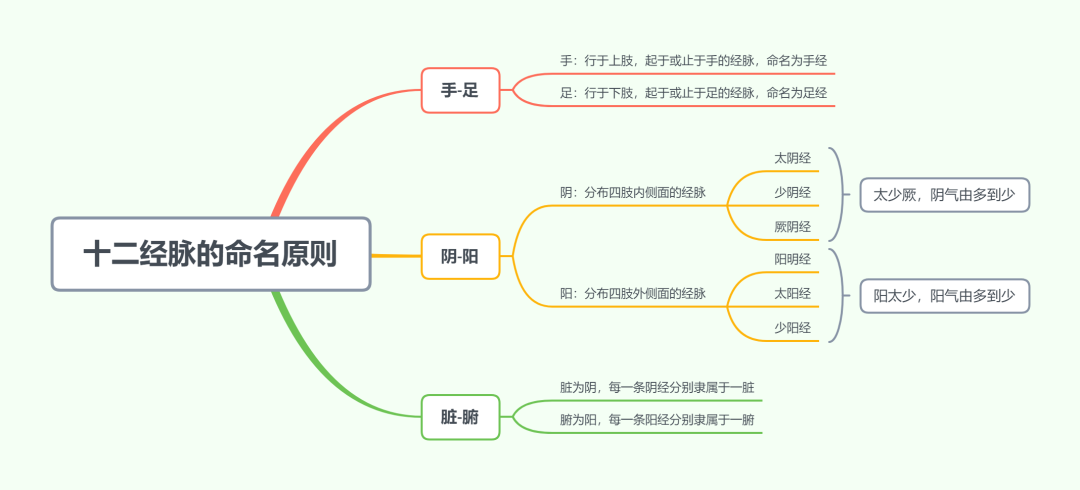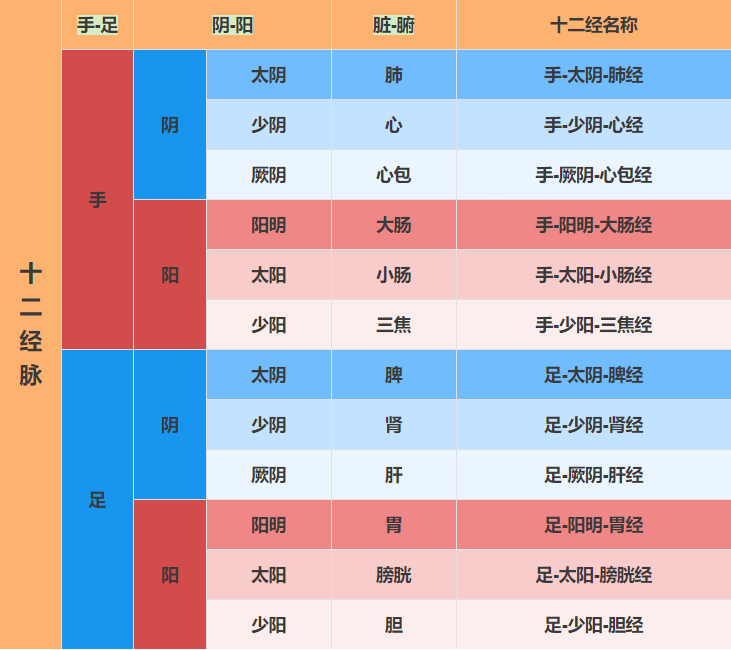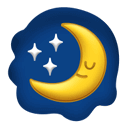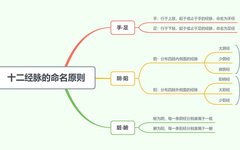AcupunctureNeedlingNotesArticle
The names of the twelve meridians consist of three parts: Hand and Foot, Yin and Yang, Organs.
For example: “Hand-Taiyin-Lung Meridian” → Hand – Hand and Foot; Taiyin – Yin and Yang; Lung – Organ.

1. Hand-Foot
In terms of the pathway of the meridians, those distributed in the upper limbs are called hand meridians, while those in the lower limbs are called foot meridians.
There are six meridians in the hand, namely the three Yin and three Yang of the hand; there are also six meridians in the foot, namely the three Yin and three Yang of the foot.
Thus, the meridians primarily distributed in the upper limbs are referred to as “Hand… Meridian”; those primarily distributed in the lower limbs are referred to as “Foot… Meridian”.
For instance, the Hand Taiyin Lung Meridian is named “Hand” to indicate that it is primarily distributed in the upper limb; the Foot Taiyin Spleen Meridian is named “Foot” to indicate that it is primarily distributed in the lower limb.
2. Yin-Yang
The Huangdi Neijing states: “The five organs store essence and qi without leaking, while the six bowels transform substances without storing.” Therefore, the five organs belong to Yin, and the six bowels belong to Yang.
According to the theory of Yin and Yang, organs are Yin, and bowels are Yang; the inside is Yin, and the outside is Yang.
Among the twelve meridians, those belonging to the organs and distributed on the inner sides of the upper or lower limbs are called “Yin meridians”; those belonging to the bowels and distributed on the outer sides of the upper or lower limbs are called “Yang meridians”.
Based on the abundance and decline of Yin and Yang, they can be divided into “Three Yin and Three Yang”, namely Taiyin, Shaoyin, Jueyin and Yangming, Taiyang, Shaoyang.
In terms of abundance, Taiyin has the most Yin, followed by Shaoyin, and Jueyin has the least; among Yang, Yangming has the most, followed by Taiyang, and Shaoyang has the least. (The order of the three Yang is debated, and this is the textbook order.)
This can be understood by the characters as follows:
Taiyin: Most abundant Yin qi
Shaoyin: Reduced Yin qi
Jueyin: Least, Yin qi exhausted
Yangming: Most abundant Yang qi
Taiyang: Abundant Yang qi
Shaoyang: Least Yang qi
The order from more to less is:
Yin more → less: Taiyin, Shaoyin, Jueyin
Yang more → less: Yangming, Taiyang, Shaoyang
3. Organs-Bowels
The twelve meridians have specific connections with the organs and bowels of the human body, which are represented by the terms “belonging to” and “connecting”.
The meridians that directly connect to the organs and bowels are called “belonging to” and are named after these organs; while these meridians can also connect with their corresponding organs and bowels, this connection is called “connecting”.
For example, the Lung connects with the Large Intestine, and the Hand Taiyin Lung Meridian is named after “Lung”, indicating that it belongs to the Lung and connects with the Large Intestine; the Hand Yangming Large Intestine Meridian is named after “Large Intestine”, indicating that it belongs to the Large Intestine and connects with the Lung.
This illustrates the relationship between the five organs and six bowels.
However, you may wonder why we only learned eleven organs when studying the Zangxiang, while the meridians involve twelve organ names. The reason is the addition of the Pericardium. The Pericardium is also called the Pericardial Meridian, thus pairing six organs with six bowels.
That is, the Liver pairs with the Gallbladder, the Heart pairs with the Small Intestine, the Lung pairs with the Large Intestine, the Spleen pairs with the Stomach, the Kidney pairs with the Bladder, and the Sanjiao pairs with the Pericardium.
The six organs corresponding to the hand and foot Yin meridians are: above the diaphragm corresponds to the hand, namely: Heart, Lung, Pericardium. Below the diaphragm corresponds to the foot, namely: Liver, Spleen, Kidney.
Then, based on the relationship between the six organs and six bowels: the Small Intestine, Large Intestine, and Sanjiao correspond to the hand; the Gallbladder, Stomach, and Bladder correspond to the foot.
Distribution Pattern of the Twelve Meridians: If a person is in a crawling position with both hands touching the ground and looking up ahead, the areas illuminated by the sun are generally the pathways of the Yang meridians, while the areas not illuminated by the sun are generally the pathways of the Yin meridians.
On the head, the Foot Taiyang Meridian runs along the back of the head, the Foot Shaoyang Meridian runs along the sides of the head, and the Foot Yangming Meridian runs along the forehead.
On the trunk, the Foot Taiyang Meridian runs along the back, the Foot Shaoyang Meridian runs along the sides, and the Foot Yangming Meridian and Foot Three Yin Meridians run along the chest and abdomen.
In the upper limbs, the Yang meridians run on the extensor side (outer side), and the Yin meridians run on the flexor side (inner side).
In the lower limbs, the Yang meridians run on the outer and posterior sides, while the Yin meridians run on the inner side.
Moreover, the Yangming and Taiyin meridians are at the front edge, the Shaoyang and Jueyin meridians are in the middle, and the Taiyang and Shaoyin meridians are at the back edge, forming a distribution where the Yin and Yang meridians are paired oppositely.
Friends interested can refer to the relevant content in the Huangdi Neijing.
The PDF document is as follows for those who need it:
↓↓↓
Huangdi Neijing: Suwen: On the Separation and Combination of Yin and Yang, Chapter Six.pdf
At this point,
will it give you
a new understanding of the names of the twelve meridians?
Have you understood it?
I believe that if you understand this,
it will help you remember more quickly and accurately.
Now let us review together through the table.

PS. You can remember according to color,dark→lightcorresponding to Yin and Yangmore→less, and you can also visually seeredandbluecorresponding to memoryof organsand bowels, of course, these are all auxiliary methods, the most important is to rely on your own memory.

This is a question from a friend.
Here is the answer in tabular form.

The above is a detailed reply and sharing regarding the questions from two friends yesterday.
I also hope that
it will help friends with similar doubts.
I hope my reply has clearly answered your confusion.
I would like to mention that
generally, I log in to check in the evening.
Sometimes I may be late in replying due to other matters.
If I see it, I will try to respond.
So if I do not reply to everyone in a timely manner,
I hope for your understanding.
If there are any shortcomings, please feel free to point them out.
If you have good suggestions or viewpoints,
I would appreciate your sharing.
Thank you all for your trust.
I am willing to communicate with you.
Everyone is welcome to exchange and learn together.
Feel free to speak your mind.
Although I am neither a doctor nor a teacher,
and I do not know much,
but
I will share what I know without reservation.
I will do my best
to share good content that I know.
Get some rest early.

 END
END
 Share
Share Collect
Collect View
View Like
Like

